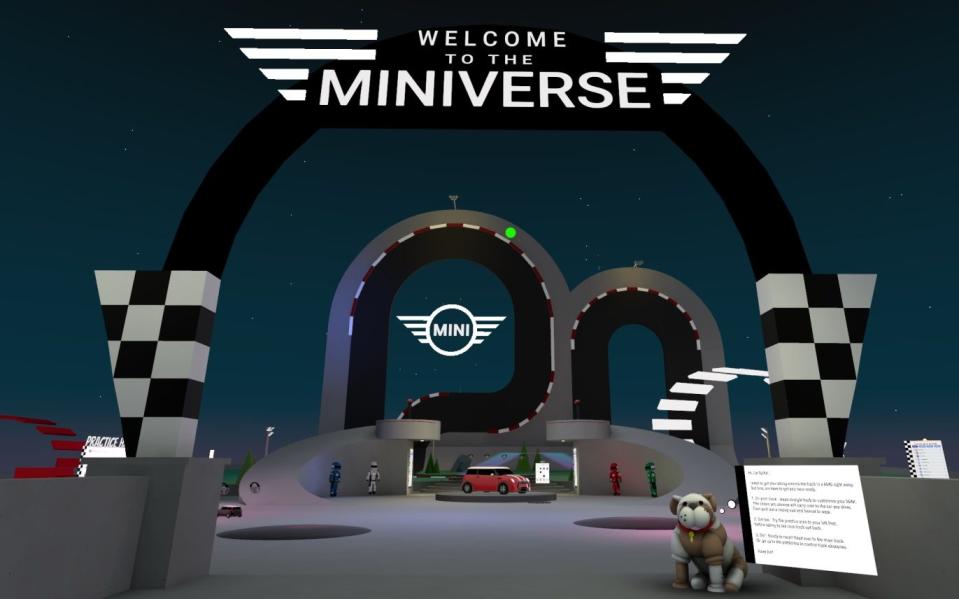Meta’s sad quest to convince corporates to join the metaverse

Before you stands a giant burger atop a low, round building. Eerie neon-yellow lighting invites you up a ramp leading inside the Buck Biscuitdome.
Within the massive burger is an empty basketball stadium. A sponsorship banner for fast food chain Wendy’s hangs over one end. In the centre of the court is a burger on a plinth.
You walk to the plinth and find instructions on it: “Shoot the Breakfast Baconator from half court to get on the leaderboard”.
This is the Wendyverse, a virtual basketball court in Meta’s Horizon World designed to create a sense of community for younger customers, according to the fast food chain. It, however, stands completely empty.

A year after its launch, the Metaverse is still baffling to many.
As Meta struggles with slowing sales amid founder Mark Zuckerberg’s fixation with computerised virtual reality worlds, brands are wondering whether they too need to follow the 38-year-old tech whizz into his bizarre vision of the future.
Many companies have piled their marketing millions into metaverse experiments, launching virtual worlds, cryptocurrency-inspired “non-fungible-tokens” (NFTs) and video game tie-ins to appeal to customers.
Sales reps from Meta have been touring Britain’s boardrooms with the words of Zuckerberg’s right-hand man Nick Clegg echoing in their ears: “The metaverse is a logical evolution. It’s the next generation of the internet – a more immersive, 3D experience.
“Its defining quality will be a feeling of presence, like you are right there with another person or in another place.”
The reality, as told by a British executive on the receiving end of one of these pitches, is much more mundane.
“A lot of it felt very Second Life, workplace meetings and all that,” said the executive.
Second Life is the original metaverse experiment. Created in the aftermath of the dot-com crash of the early 2000s, it had all the features of Zuckerberg’s metaverse: virtual avatars, digital currency and real-world shops. Its popularity waned, although the site still exists today.

Zuckerberg’s take on the metaverse promises to be more life-like than anything produced by Second Life. Meta invites you to pull on a £350 Meta Quest 2 headset and boot up the company’s Horizon World: a blend of a virtual reality computer game and a social network.
But despite ploughing $10bn a year into its metaverse efforts, sales declined at its “Reality Labs” division, as revealed in its most recent results for the three months to September. Once valued at more than $1 trillion, Meta is now worth $256bn after losing more than 70pc of its value this year alone.
To make the metaverse work, the company needs brands onboard to give consumers a reason to spend time in its virtual world.
“Nike, Adidas and premium brands like Gucci and Louis Vuitton have made early moves,” says Media analyst Paolo Pescatore of PP Foresight.
“Numerous reports suggest Horizon Worlds offers a poor experience and most usage appears to be focused on games,” Pescatore continues.
“Most branded worlds are deserted and lonely. The lack of any standout branded world underlines the huge challenge ahead.”
The Telegraph’s visit to the Wendyverse confirmed this impression. Equally empty was the Fenderverse, a guitar-themed environment entered by walking along the fretboard of a giant Stratocaster. Neither was anyone to be found in BMW’s MINIverse.

The reality of the virtual world is far removed from the hype surrounding it. A Meta spokesman claims the metaverse economy could be worth more than $3 trillion by 2031. “We’ll continue to partner with innovative companies, like Microsoft, Accenture and Prada, to help build exciting experiences and bring more people and companies into the metaverse,” they say.
However, one study found that 85pc of Gen Z respondents were “indifferent” to brands joining the metaverse, while the Wall Street Journal found that less than 200,000 users were entering Horizon Worlds per month.
Meta is also not the only company trying to attract brands. Heineken’s beer experiment was launched in rival metaverse Decentraland, while footwear brand Nike’s offering is built into the video game Roblox, a “sandbox” video game played by nearly 60m people. Nike says 7m so far have paid a visit to the shop.
Some brands have found success in Horizon Worlds, however. Les Mills, the fitness company, says it designed a virtual reality fitness app to run on Meta Quest headsets. Jak Phillips, its global content director, says: “We have worked closely with Meta to help us navigate the platform and refine our offering.” It is now the top selling fitness app on the headset.
In a recent presentation, Meta technology head Andrew Bosworth claimed 33 virtual reality titles for Meta’s headsets had earned more than $10m in sales.
Brands are not being put off from the metaverse, argues Lewis Smithington, of S4 Capital-owned marketing agency Media Monks. “We are seeing massive amounts of interest. Near ridiculous amounts,” he says. The same can not be said for customers.
Smithington notes that companies need to offer consumers a reason to jump into the virtual world through experiences such as virtual gigs.
You can build it, as some brands already have, but that's no guarantee they'll come.
